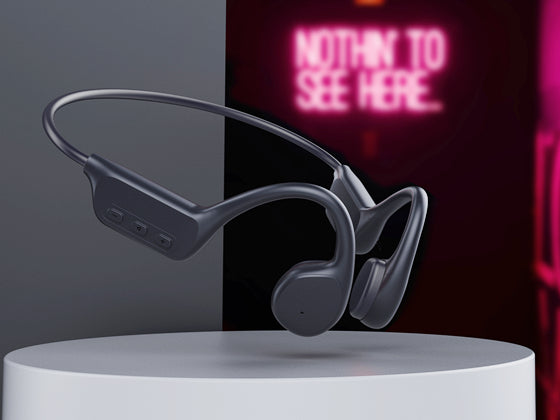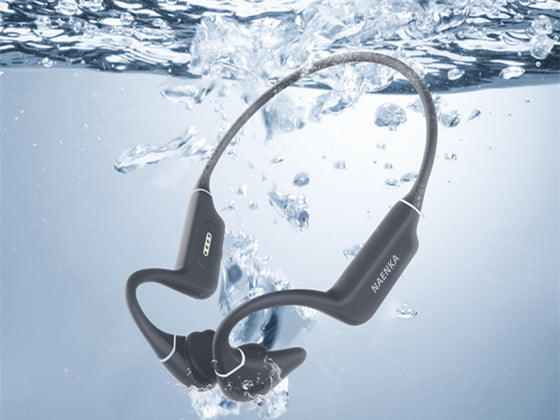In the realm of audio technology, open ear headphones have emerged as a distinctive and innovative category, offering users a unique auditory experience. As a seasoned designer with over a decade of expertise in open ear headphone design, I will delve into the intricacies of these headphones, exploring their design principles, technological advancements, and the impact on user experience.
Understanding Open Ear Headphones:
Definition and Design Principles
Open ear headphones, also known as open-back headphones, are characterized by a design that allows sound to escape from the ear cups, contributing to a more natural and spacious audio experience. Unlike closed-back headphones, which isolate the listener from ambient noise, open ear headphones have perforated ear cups or grilles, promoting a more immersive and open soundstage.
Acoustic Transparency and Natural Sound Reproduction
One of the defining features of open ear headphones is their emphasis on acoustic transparency. The open design prevents sound reflections within the ear cups, leading to a more natural and realistic sound reproduction. This transparency is achieved through the interaction of the headphone's drivers with the external environment, creating a unique sonic signature appreciated by audiophiles and professionals.
Ventilation and Comfort
The open-back design also serves a crucial role in providing ventilation to the ears. This not only contributes to extended comfort during prolonged use but also minimizes the heat buildup commonly associated with closed-back headphones. The improved breathability is a key factor for users who prioritize extended listening sessions without sacrificing comfort.
Technological Advancements in Open Ear Headphones:
Driver Technology
Open ear headphones incorporate various driver technologies to enhance audio quality. Planar magnetic drivers and dynamic drivers are common in these headphones, each offering distinct advantages. Planar magnetic drivers provide faster response times and lower distortion, contributing to a more accurate sound reproduction. Dynamic drivers, on the other hand, excel in delivering deep bass and dynamic range.
Acoustic Isolation Techniques
While open ear headphones are known for their open design, modern innovations include advanced acoustic isolation techniques. These may include specialized damping materials and strategic ear cup designs that mitigate sound leakage without compromising the benefits of an open-back structure.
Cable and Connectivity
In the realm of cable design, open ear headphones often feature detachable cables, allowing users to customize their listening experience. Additionally, advancements in connectivity, such as the integration of Bluetooth technology, provide users with wireless freedom without sacrificing audio quality.
User Experience and Applications:
The Audiophile Experience
For audiophiles, open ear headphones offer an unparalleled listening experience characterized by a wide soundstage, precise imaging, and an authentic representation of instruments and vocals. The transparency of the sound signature allows users to discern intricate details in their favorite music, making open ear headphones a preferred choice for critical listening.
Professional Audio Production
Open ear headphones have found a niche in professional audio production, particularly in mixing and mastering environments. The accurate sound reproduction and spatial awareness provided by these headphones enable audio engineers to make precise judgments in their work, ensuring that the final product meets the highest standards.
Gaming and Virtual Reality
The immersive soundstage of open ear headphones enhances the gaming and virtual reality experience. Users can pinpoint the direction of in-game sounds with greater accuracy, providing a competitive edge in gaming environments. Additionally, the comfort factor becomes crucial during extended gaming sessions.
References and Academic Insights:
1. "The Influence of Open Ear Design on Sound Localization" - Journal of Acoustic Engineering
- This academic article explores how the open design of headphones impacts the localization of sounds, providing insights into the spatial awareness facilitated by open ear headphones.
2. "Acoustic Transparency in Open Ear Headphones" - Audio Engineering Society Journal
- This journal article delves into the concept of acoustic transparency in open ear headphones, discussing its implications for natural sound reproduction.
- A comprehensive analysis comparing different driver technologies employed in open ear headphones, shedding light on their respective advantages.
FAQ: Frequently Asked Questions
Q1: Are open ear headphones suitable for noisy environments?
A1: Open ear headphones, with their design emphasizing acoustic transparency, may not provide the same level of isolation as closed-back headphones. They are ideal for quiet listening environments.
Q2: Can open ear headphones be used for professional audio production?
A2: Yes, many professionals in audio production, including mixing and mastering engineers, prefer open ear headphones for their accurate sound reproduction and spatial awareness.
Q3: Do open ear headphones work well for gaming?
A3: Absolutely. The wide soundstage of open ear headphones enhances the gaming experience by providing precise spatial awareness, allowing users to pinpoint in-game sounds effectively.







